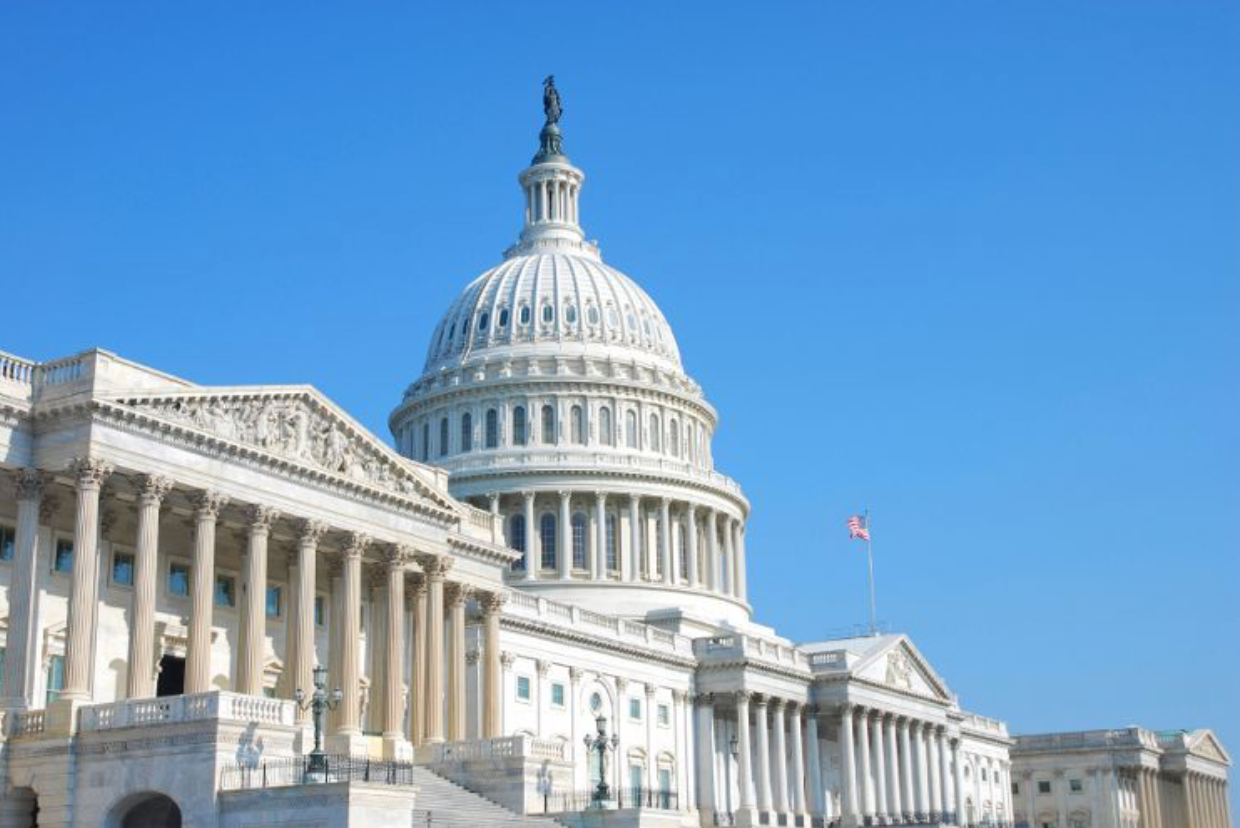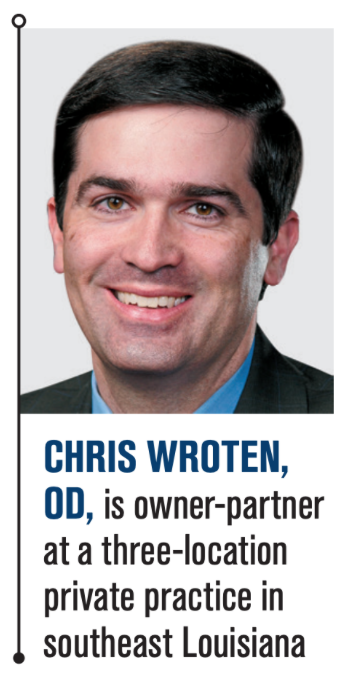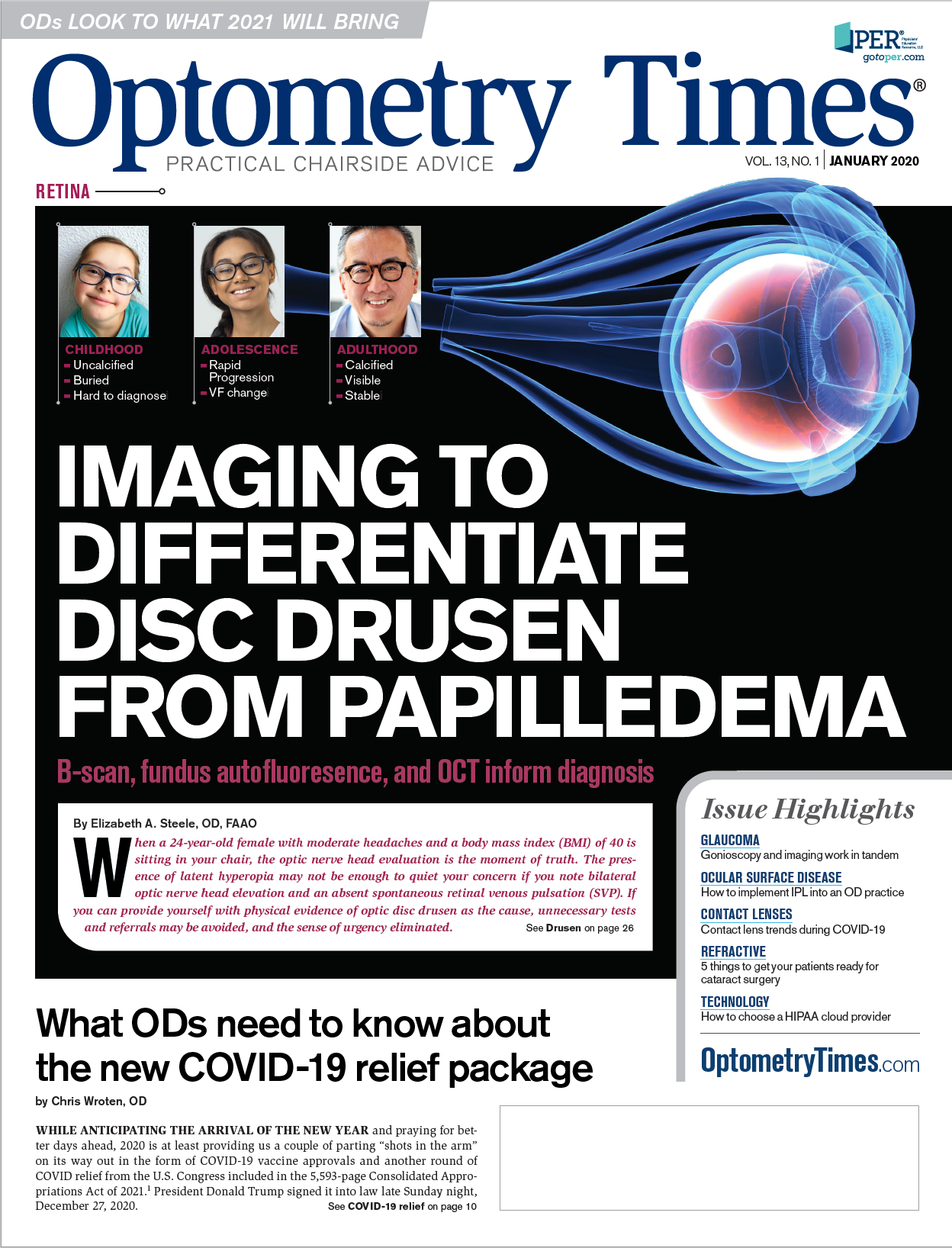What ODs need to know about the new COVID-19 relief package
Another PPP loan, stimulus checks, tax relief, and more may help ODs and their practices. An additional $900B in COVID-19 stimulus funding has been approved, and here are highlights that every OD needs to know.

While anticipating the arrival of the new year and praying for better days ahead, 2020 is at least providing us a couple of parting “shots in the arm” on its way out in the form of COVID-19 vaccine approvals and another round of COVID relief from the U.S. Congress included in the 5,593-page Consolidated Appropriations Act of 2021.1President Donald Trump signed it into law late Sunday night, December 27, 2020.

Thanks in no small part to the American Optometric Association’s (AOA) advocacy on behalf of optometry and our patients, doctors of optometry secured $1.69B in aid from earlier relief programs,2 and as a result of continuing advocacy efforts this recent legislation contains more welcome good news. An additional $900B in COVID-19 stimulus funding has been approved, and here are highlights that every OD needs to know.
Related: What the COVID-19 relief package means for ODs
Second Draw PPP rules
Congress has authorized an additional $325B in funding for the Small Business Administration (SBA) to administer Second Draw Paycheck Protection Program (PPP) “loans” through private lending institutions, as was done in the first round of the PPP.
To be eligible, practices applying for a Second Draw PPP loan must:
- • Have 300 or fewer employees
- • Have used (or will use) the full amount of their first PPP loan
- • Show a minimum 25 percent reduction (i.e., loss) in gross receipts for the first, second, or third quarter of 2020, relative to the same quarter in 2019
Only one Second Draw PPP Loan may be obtained per eligible entity, and for most optometry practices, loan amounts will be up to 2.5x the practice’s average monthly payroll costs in the one year prior to the loan (or the calendar year). Borrowers are again eligible for full forgiveness of the PPP loan if at least 60 percent of the funds are used for payroll costs, with up to 40 percent used for eligible non-payroll costs.
Eligible non-payroll costs have been expanded to include:
• Covered mortgage, rent, and utility payments (just as in the First Draw PPP)
• Covered operations expenses (e.g., human resources and accounting costs, software expenses, cloud computing expenses, and group health/dental insurance costs)
• Covered property damage costs (i.e., due to public disturbances that occurred in 2020 that are not covered by insurance)
• Covered supplier costs (i.e., amounts owed to a supplier for a contract, purchase order, or order for goods such as frames and lenses that was in effect prior to taking out the loan and which are essential to the practice’s operations at the time the expenditure was made)
• Covered worker protection expenses (e.g., personal protective equipment [PPE] and safety modifications to the facility) incurred during the covered period of the loan
Lending institutions approved to offer the initial PPP loans may offer Second Draw PPP loans under the same terms and conditions as the initial loans.1
Tax implications
On November 18, 2020, the U.S. Treasury Department and the Internal Revenue Service (IRS) emphasized and reiterated its earlier position that any normally deductible business expense(s) used to justify PPP loan forgiveness would not also be tax deductible, in order to prevent a “double tax benefit.”3 In effect, this ignored Congress’ original intent and essentially made the PPP loan amount taxable income for the practice, increasing the pass-through personal income tax burden to the owner(s).
Congress has now fixed this challenge, stating that the practice’s taxable income shall not include any amount that would otherwise arise from the forgiveness of a PPP loan or a Coronavirus Aid, Relief, and Economic Security (CARES) Act Economic Injury Disaster Loan (EIDL) grant or other certain CARES Act loans.
It further specifically states that:
• Tax deductions are allowed for otherwise deductible expenses paid with the proceeds of a forgiven PPP loan
• Tax deductions are allowed for otherwise deductible expenses paid with the amounts not included in income for the EIDL program
• The tax basis and other attributes of the borrower’s assets will not be reduced as a result of those amounts being excluded from the practice’s gross income in either case above
For PPP, this is effective from the date of enactment of the CARES Act. For Second Draw PPP loans, it is effective for the tax years ending after the date of enactment of the Second Draw PPP provision. For EIDL, the provision is effective for tax years ending after the date of enactment of the CARES Act.1
EIDL funding
New funding has been provided for the EIDL Program, the previously created low-interest loan program administered and provided directly through the SBA. While terms are favorable for small businesses utilizing an EIDL, it is not a grant and must be repaid.
The covered period for Emergency EIDL grants has also been extended through December 31, 2021. Additionally, the part of the CARES Act which requires PPP borrowers to deduct the amount of their EIDL advance from their PPP forgiveness amount has been repealed.
Medicare reimbursement
The legislation provides for a 1-time, 1-year increase in the Medicare physician fee schedule of 3.75 percent during 2021 and delays the impending 2 percent Medicare sequester payment reductions for 3 months, through March 31, 2021.1
HHS Provider Relief Fund grants
An additional $3B in grants has been allocated for the Health and Human Services (HHS) Provider Relief Fund through which hospital and healthcare providers can be reimbursed for healthcare-related expenses or lost revenue directly attributable to the COVID-19 public health emergency.
Plus, HHS must also now allocate not less than 85 percent of currently unobligated funds in the Provider Relief Fund through an application-based portal to reimburse healthcare providers for financial losses they incurred in 2020.1
Congress has also directed HHS to increase its focus on Medicaid providers and others who may have been underrepresented in previous rounds of the Provider Relief Fund distribution, as well as on those providers at imminent risk of closure.
Stimulus checks for households
Some ODs and most of their staffs will receive another round of stimulus checks in the amount of $600 for each adult and $600 for each dependent in the household who is 16 years of age or younger. Technically, these are refundable tax credits for which advance payments are being issued..
Based on income from 2019, the check amounts begin phasing out at a rate of $5 per $100 of additional income based on modified adjusted gross income of:
- • $75K for individuals
- • $112.5K for heads of household
- • $150K for married couples filing jointly
Any individual with a 2019 modified adjusted gross income of $87K or more will not receive a stimulus check (or for married couples filing jointly that threshold is $174K or more).4
Unemployment assistance
ODs and their staffs who are laid off are eligible to receive benefits from extension of most of the CARES Act Unemployment Provisions (specifically, Pandemic Unemployment Assistance, Federal Unemployment Compensation, and Pandemic Emergency Unemployment Compensation). These programs were set to expire at the end of 2020 but have been extended through at least March 14, 2021. They include a federal supplemental unemployment insurance benefit of $300 per week in addition to state unemployment insurance benefits.
COVID testing, tracing, and vaccines
With the majority of ODs and their staffs eligible to receive vaccine administration in Phase 1a or Phase 1b of the Centers for Disease Control and Prevention’s (CDC) priority table, and many ODs eligible to order COVID tests and administer COVID vaccinations and be appropriately reimbursed for those services, Congress has allocated additional funds totaling over $31B for state and local governments and for the CDC for use in COVID testing and contact tracing, and vaccine distribution and tracking.
Other tax implications
The refundable payroll tax credits for paid sick and family leave, enacted in the Families First Coronavirus Response Act, have been extended through the end of March 2021.
Miscellaneous
Again, thanks to the efforts of the AOA, 2 additional welcome pieces of good news were included in the bill.
First, Congress took the Federal Trade Commission (FTC) to task and legislated a delay in enforcement of the FTC’s flawed and unnecessarily burdensome Contact Lens Rule changes—which require contact lens prescribers to obtain every contact lens patient’s signature on a form attesting that they received a copy of their contact lens prescription, then keep that signed form for 3 years, and be able to produce it when asked by investigators or face a penalty. The delay is until April 1, 2021.
Additionally, the American Optometric Association (AOA) successfully lobbied Congress to require HHS to fully implement provider non-discrimination in its rulemaking (also known as the Harkin Law).
PPP eligiblity expansion
PPP loan eligibility has been expanded to include 501(c)6 organizations which do not spend more than 15 percent of their activity on lobbying efforts, which didn’t spend more than $1M in total on lobbying expenses in the most recent tax year that ended prior to February 15, 2020, and which have 300 or fewer employees.
This could be a huge benefit to optometry organizations such as the AOA, state optometry associations, and other eligible groups within the profession.
Wrapping up
Again, many thanks to the AOA, its leadership and volunteers, and the countless doctors of optometry across the country who lobbied their senators and representatives to help make this round of critical relief a reality.
We are closer to the end of this pandemic than we are to the beginning, so in the meantime be sure to take advantage of these programs as you see fit, keep hanging in there, and stay safe and healthy.
More from our January 2021 issue
References
1. Democratic Staff of the House Committee on Appropriations. H.R. 133 - DIVISION-BY-DIVISION SUMMARY OF COVID-19 RELIEF PROVISIONS. Wall Street J. Available at: https://s.wsj.net/public/resources/documents/SummaryofCoronavirusReliefProvisions122020.pdf. Accessed 12/22/20.
2. American Optometric Association. AOA president: Successes amid very turbulent year. Available at: https://www.aoa.org/news/inside-optometry/aoa-news/house-of-delgates-successes-amid-very-turbulent-year?sso=y. Accessed 12/22/20.
3. American Optometric Association. IRS ruling on PPP loans could raise practices’ taxes, AOA pushing for fix in new COVID-19 bill. https://www.aoa.org/news/practice-management/perfect-your-practice/ppp-loan-tax-implications?sso=y. Accessed 12/22/20.
4. Menton J. Here’s who doesn’t get the $600 stimulus check if COVID-19 relief bill signed. USA Today. Available at: https://www.usatoday.com/story/money/2020/12/23/stimulus-checks-who-doesnt-get-stimulus-check-covid-19-relief-package/4013736001/. Accessed 12/23/20.

Newsletter
Want more insights like this? Subscribe to Optometry Times and get clinical pearls and practice tips delivered straight to your inbox.